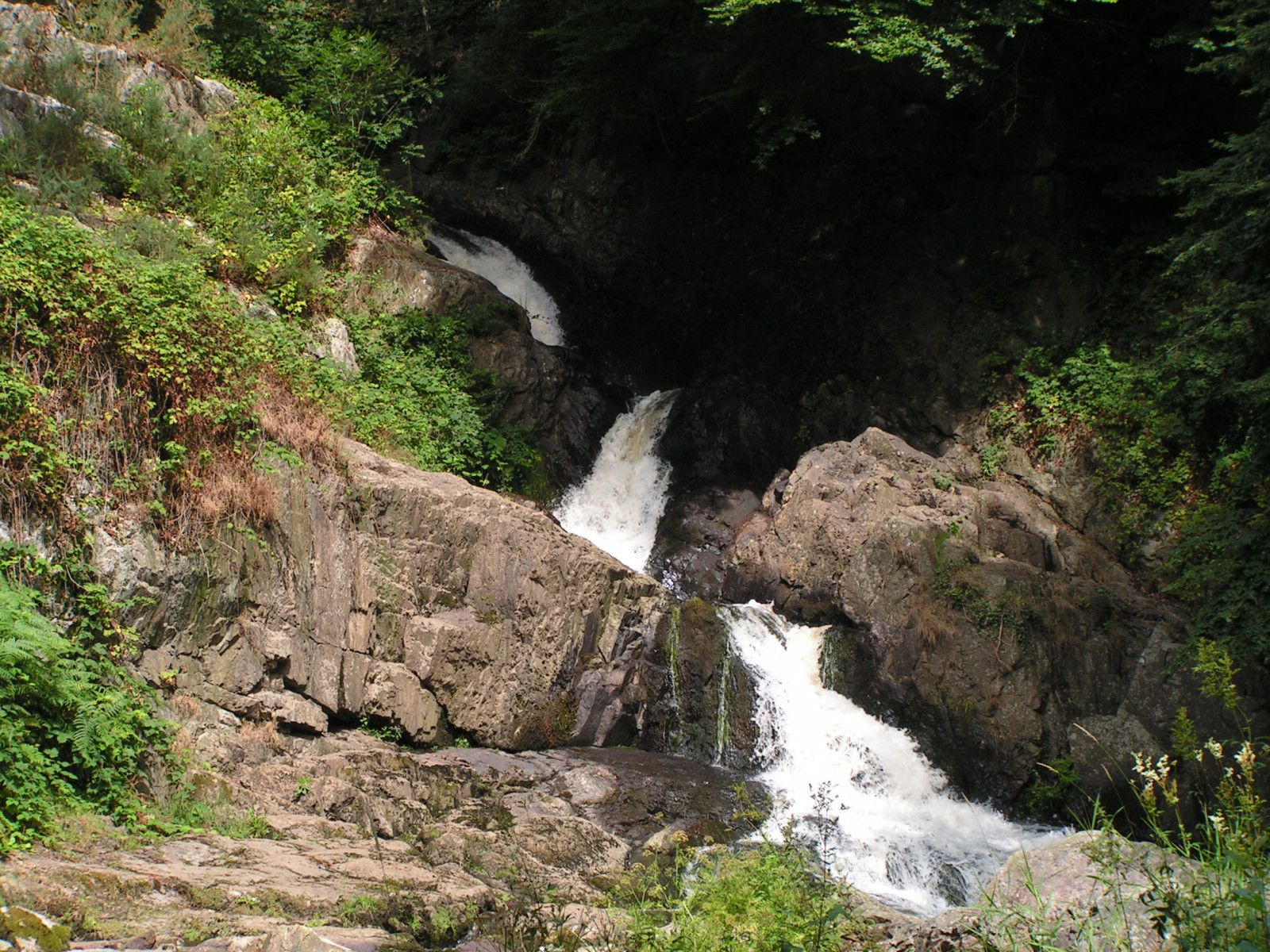 This small pleasantly well-kept town is built half way up a hillside in an attractive setting where the River Cance, cutting through the last of the Basse-Normandie’s southern hills, emerges on to the vast wooded Sélune Basin, leaving in its wake a rock-strewn countryside.
This small pleasantly well-kept town is built half way up a hillside in an attractive setting where the River Cance, cutting through the last of the Basse-Normandie’s southern hills, emerges on to the vast wooded Sélune Basin, leaving in its wake a rock-strewn countryside.
 During the Middle Ages Mortain was the capital of the county held by Robert, the stepbrother of William the Conqueror. The town has been rebuilt over the ruins left after the Battle of Normandy.
During the Middle Ages Mortain was the capital of the county held by Robert, the stepbrother of William the Conqueror. The town has been rebuilt over the ruins left after the Battle of Normandy.

 These are the Petite Cascade and the Grande Cascade. The River Cance flowing through a wooded gorge creates the waterfalls; the foaming waters recall the mountain streams of the Pyrenees or the Alps.
These are the Petite Cascade and the Grande Cascade. The River Cance flowing through a wooded gorge creates the waterfalls; the foaming waters recall the mountain streams of the Pyrenees or the Alps.

 Adeline and her brother Vital, chaplain to Count Robert, founded this former monastery, the Abbaye Blanche, in a landscape of rocky out crops in the 12th century. The abbey now serves as a retreat house. Contrary to other Romanesque cloisters in the region, which have twinned columns or clusters as at Mont-St-Michel, the gallery here consists of a simple row of single columns. The vaulting is of timberwork.
Adeline and her brother Vital, chaplain to Count Robert, founded this former monastery, the Abbaye Blanche, in a landscape of rocky out crops in the 12th century. The abbey now serves as a retreat house. Contrary to other Romanesque cloisters in the region, which have twinned columns or clusters as at Mont-St-Michel, the gallery here consists of a simple row of single columns. The vaulting is of timberwork.  The church within the abbey displays the usual features of the Cistercian plan: flat east end with its oculus and transept chapels. The diagonal ribs are a precursor of the Gothic style. The nave is lit by a series of six lancet windows which increase in size towards the west end.
The church within the abbey displays the usual features of the Cistercian plan: flat east end with its oculus and transept chapels. The diagonal ribs are a precursor of the Gothic style. The nave is lit by a series of six lancet windows which increase in size towards the west end.
 Église Saint-Évroult, the old collegiate church reconstructed in the 13th century, is built of sandstone in a somewhat severe Gothic style. The gabled façade is lightened by three pointed windows and, below, by the main door. The 13th century belfry, pierced on the second bay shows all the decorative elements known to Norman Romanesque.
Église Saint-Évroult, the old collegiate church reconstructed in the 13th century, is built of sandstone in a somewhat severe Gothic style. The gabled façade is lightened by three pointed windows and, below, by the main door. The 13th century belfry, pierced on the second bay shows all the decorative elements known to Norman Romanesque.



